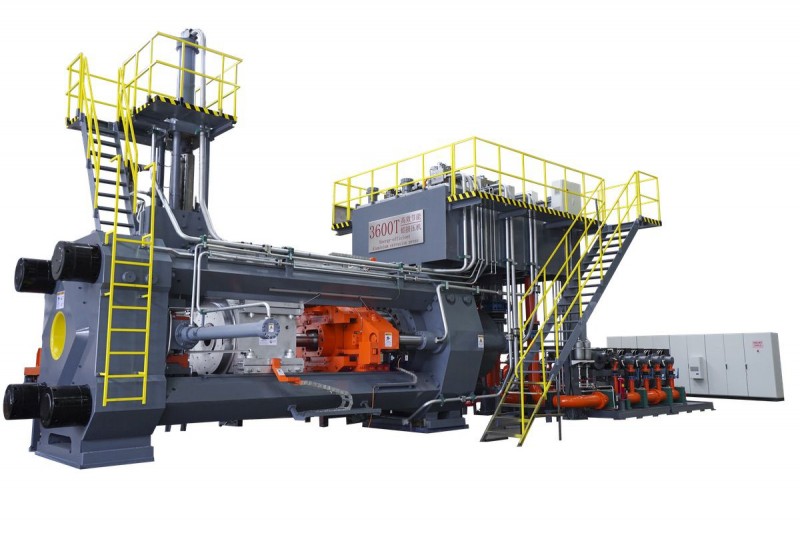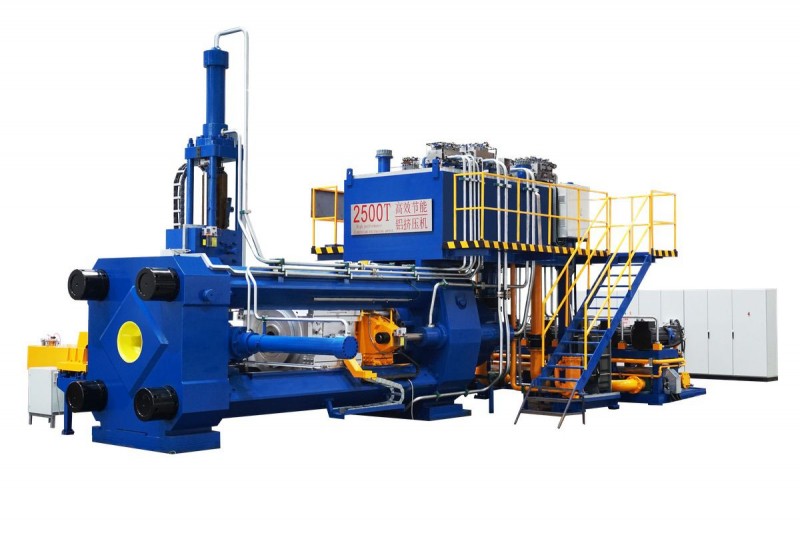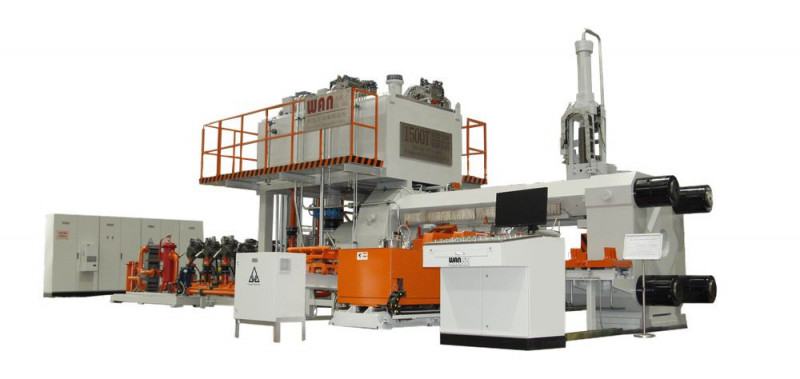Extruded aluminum is super popular now as people learn the benefits of shaped aluminum in construction and architecture, transportation and automotive, electrical and electronics and consumer products. Aluminum is one of those metals that is not only easy to mine, but is also abundant in nature and infinitely recyclable to boot!
Plus, extruded aluminum has properties that make it the stuff of engineers and designers’ fantasy. Extrusion is the process of forcing a malleable substance through a cylindrical container with a pre-determined cross-sectional profile. On the other hand, the malleable substance emerges in the shape of the container’s opening.
You witness extrusion every time you go to brush your teeth by forcing toothpaste through a tube opening. The shape or profile of the toothpaste was resultant of the tube opening it as forced through. The industrial manufacturing process works the same way.
It’s just that the underlying concept gets murky when you replace the toothpaste with a giant aluminum billet, the tube opening with a steel die and your hand by a huge ram. The aluminum extrusion process relies on a hydraulic process to push aluminum, heated to a malleable yet solid state through a steel die with a predetermined cross-sectional area. Let’s take a closer look.

An extruder takes a malleable aluminum log and forces it through a die aperture with a comparatively narrower cross-sectional profile than the ingot. On the other hand, it emerges in the shape of the die’s opening. Since there’s no limit to the different die shapes available, this process can produce so many shapes.
It can help create solid shapes that have no enclosed openings, hollow (with one or more openings and semi-hollow shapes that are partially enclosed (C channels with narrow gaps). Moreover, you can choose to create custom extrusion shapes with multiple interlocking designs and color patterns.
The Aluminum Extrusion Process Steps:
The first step involves preparing the extrusion die. Most extruders come with a tool stack containing the die, die ring, die cap, backer, sub-bolster, and bolster. Alternatively, you can create your own round-shaped die. Before loading it into the extrusion press, it’s recommended to preheat the die to about 500 degrees Celsius to extend its life and ensure the metal flows evenly.
The next step involves loading the die assembly onto the extrusion press. Most extrusions feature a couple hollow chambers, or in the case of T-slot profiles, built in grooves that must be created by the die. Therefore, parts of the die must float in the approaching flow of aluminum ingot.
This is accomplished by hanging these features on arms that span the upstream section of the die. That way, the metal flows around the arms and joins to form a smooth, steady flow without voids that would otherwise weaken the resulting structure.
A proper alloy is selected depending on its properties and eventual application of the extruded profiles. Common extruded aluminum alloys include 7075, 6063 and 6160. Once you have decided on the alloy cut it to the appropriate size and heat in an oven or furnace to between 375 and 500 degrees Celsius. Heating to between 375- 500 degrees Celsius will make it just malleable enough for your needs. Of course, aluminum melts at temperatures above 600 degrees Celsius but in extrusion you don’t want free-flowing aluminum soup.
Once the aluminum log leaves the furnace, it’s loaded onto the extrusion press using special machinery. There are two main processes to carry this out, direct and indirect extrusion, and it obviously depends on how the die behaves during the process.
The direct technique is the most common extrusion method while the indirect method is the most precise because it generates less friction and allows for greater control over the extrusion force. Here’s a detailed look:
Direct extrusion places the billet inside a heated wall container with a desirable cross-sectional opening and pushes using a powerful piston. The technique is sometimes called forward extrusion. Of course, the process produces extreme amounts of high pressure to the tune of 15,000+ tons so it’s also customary to place filler material between the aluminum and ram to keep the two apart.
That said, the ram stem also features a dummy block which is a metal structure that seals the billet in place, preventing it from pushing back when being forced through the container and die opening. Use direct extrusion to create longer intricate workpieces. It’s simple and flexible to boot. Even novices can use the technique to create intricate aluminum profiles for their projects.
In indirect extrusion, the die is stationary but the aluminum billet and container move at the same time. This way, the billet extrudes through the die opening. A stem is often used to hold the ram in place. Indirect extrusion exerts a relatively steady force and enables better heat management to produce a more consistent product quality.
This technique requires less amounts of force because the friction force operating between the pressure chamber and billet is small. It generates only an insignificant amount of heat, thus helping avoid any temperature rise at the ingot surface. Additionally, low friction means higher extrusion speeds, uniform metal flow and reduced product defects including coarse surfaces and cracks.
Ultimately, the technique will depend on your extrusion press setup. Load the heated ingot and get ready to extrude it into the shape you want.
At this stage, the billet is malleable and inside the extrusion press. Shear away any excess material from the aluminum log using log shears then push the resulting billet through the extrusion barrel (container) using immense force. This injection molding can be electric, hydraulic and pneumatic depending on the extruder brand.
Hydraulic presses use oil-filled cylinders and are the most common extruding machines. Pneumatic systems use compressed gas while electric extruders use rotating screws. Each system has its own advantages and disadvantages. Let’s take a detailed look:
Hydraulic extruders require the combination of a cylinder, pump, valves and other secondary components to work. They use a pump to force the oil to pressurize and move the plunger using Pascal's pressure fluid transmission principle.
This principle says that any pressure on a trapped fluid is transmitted equally throughout the fluid, meaning if you press in on one end of the cylinder, that pressure goes through the whole chamber to the other end forcing the billet to move through the die opening.
This allows a more definite control of the extrusion process but not the accuracy and repeatability. To besmirch it further, it is quite a noisy process and can even damage the ears of operators or anyone passing near the machines. These extruders are also prone to pump damage, and oil leakage among other malfunctions.
Pneumatic extrusion presses work just like hydraulic presses but use pressurized gas to drive and extrude the heated metal. Just like hydraulic systems, pneumatic extruders are also prone to gas leakages, solenoid valve damage and inflexibility of the piston rod.
On the other hand, electric extrusion uses turning screw rods to push and pressurize. This setup requires only the rod actuator, motor and a tiny control cabinet, eliminating the need for consumables such as filters and oils. The process is computer-controlled resulting in a high degree of accuracy and repeatability.
Computers also enable fast-paced acceleration, precise pressure control, and parallel movements for simultaneous processes. They’re also more energy efficient compared to their hydraulic and pneumatic cousins. Indeed, studies show that electric presses use up to 70 percent less energy than fluid cylinders.
When you apply pressure, the aluminum alloy expands filling the walls of the barrel. It’s important to correlate the extrusion speed, pressure and temperature. As mentioned, always heat the aluminum log to make it just malleable enough for extrusion. Don’t forget to preheat the extrusion barrel, die and other secondary apparatus to the correct degree otherwise they will draw or transfer heat to the billet during the operation interfering with the extrusion process. You don’t want these components to draw heat from the billet, cooling it before extrusion or transfer heat and make it too soft for proper extrusion. Always ensure you are operating with the correct working temperature.
You should also consider a billet temperature that ensures a brief production cycle. It should also not affect the extruder’s surface conditions and components tolerance. Most modern extruders employ state-of-the-art infrared temperature monitoring cameras to measure the success of the extruder’s temperature control at the press loading, during the push and at the lead-out table. These three temperatures are essential in ensuring the extrusions achieve desired mechanical properties and structural integrity.
During pushing, it’s also important to apply just the right amount of force. Too much pressure can damage the billet and die assembly while too small pressure may not force the aluminum through the die properly. Speed matters too; if you push too fast, the extrusion won’t cool properly but if you push too slow the aluminum may lose temperature before extruding.
When the aluminum comes out on the other end of the opening, it assumes the die’s cross-sectional profile. A puller holds the extrusion in place, protecting it as it leaves the press.
As the metal moves along the lead-out table, it is quenched in a water bath or using a fan to allow it to harden and develop desirable mechanical properties. You can’t cut or perform finishing techniques before quenching and cooling because the soft pieces will just lose form and you end up with shoddy product.
Following cooling, pullers grab and secure the extruded profiles, guiding them down a runout table. The puller and runout table form a conveyor belt system set to match the speed with which the aluminum pieces exit the extrusion press.
Once the extrusion has been quenched, it’s sliced at the joint and pushed to another table for further cooling and then straightened to relieve unwanted twists and stress. The last thing you want is shipping out extruded aluminum with unwanted twists. Your client won’t like subpar profiles. A stretcher holds the profiles on both ends and pulls them until fully straight.
The work-hardened and straightened pieces are transferred from the runout table to the sawing setup for resizing, which entails cutting to match the lengths specified by the customer.
The next step is tempering heat treatment and it involves heating the aluminum pieces to improve mechanical properties. The recommended annealing temperature range is 300-410 degrees Celsius, depending on the exact alloy. Temperature treatment marks the completion of the extrusion process and it’s now up to the person to apply secondary treatment.
Secondary services include deburring in a roto machine to eliminate piercing edges and get the surface ready for finishing treatment including powder coating, painting or e-coat. Surface finishing improves the profile’s appearance and corrosion resistance resulting in a product that your customers will appreciate and leave glowing remarks.
Aluminum extrusion is a multi-versatile fabrication technique that manufacturers exploit to create profiles for different applications according to project requirements and customer specifications. It’s a simple process with fast turnaround time and better results than any other aluminum forming technique.
Visit our products page for a look at our extrusion technologies and solutions that could help put your sheet metal plant on the map. With a record of consistent delivery lead times and fast turnaround, Wangeshi aluminum extrusion technologies and solutions are trusted by metal fabricators all over the world.
Even though extrusion is a pretty simple forming technique, it produces numerous possible designs for various applications. You, too, can get your mitts on aluminum extrusion machines and quickly establish the forming process. For additional information we welcome questions from curious minds and will be happy to discuss our extrusion solutions with you and help select adaptable technologies for your ever-evolving manufacturing plant.


